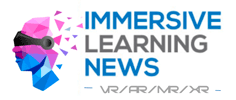The days of hiring rock star employees and keeping them for decades are long gone, as evidenced by Akumina’s 2019 “Millennial Manager Survey,” which found that 40% of millennial managers have had four or more jobs since high school and that 75% of millennials believe changing jobs regularly has helped their careers.
While job-hopping may benefit workers in some ways, the practice is detrimental to the companies that serve as stepping stones on the path to greener pastures. For starters, turnover is expensive. Work Institute estimates that turnover costs employers 33% of an employee’s annual salary. If an employee who earns $60,000 per year decides to leave, this statistic suggests, the business will need to fork over as much as $19,800 on recruiting and training costs to replace that employee. Turnover can also negatively impact productivity and the customer experience, further damaging the bottom line.
Making matters worse, many companies are experiencing hiring freezes and budget cuts in the midst of the COVID-19 pandemic. Many are also fully remote right now, which may bode poorly for employers, as a Gartner survey found that employees who never work remotely are 13% more likely to show “high intent to stay with their current employer.”
In the past, companies could usually retain workers by increasing salaries. Unfortunately, this practice is no longer guaranteed to work. A 2019 survey by The Muse found that 58% of young workers are willing to switch jobs for training and learning opportunities or an improved work/life balance, ahead of compensation. In other words, while money may help increase employee retention, it’s not always enough.
To reduce attrition, companies must rethink the employee experience and adapt to changing employee expectations along their entire journey. Offering more engaging and innovative learning and development (L&D) programs is one of the most effective — and often overlooked — ways to invest in employees and keep them from moving on.
How L&D Can Boost Employee Retention
The sweet spot for L&D is aligning employees with the organization’s specific goals and expectations — while providing them with the skills they need to do their jobs and empowering them to be on track to advance. Finding this sweet spot and putting it into practice can be effective in improving retention.
By providing continuous training and learning opportunities for employees, organizations can enable them to be more effective, more capable of adapting to change and more apt to stick around for these three reasons:
1. Elevating Workplace Performance
An L&D program identifies skills gaps and provides workers with the knowledge and feedback they need to perform at a higher level. It can reduce or eliminate negative performance reviews while increasing an employee’s self-confidence. For example, a sales professional may use L&D to identify weaknesses in his or her sales process and as a result, close more deals — leading to more consistent returns and stronger overall outcomes.
2. Increasing Engagement
One of the top reasons employees leave an organization is due to a lack of engagement — emotional and energetic commitment to the organization and its objectives. L&D programs keep employees motivated, interested in and prepared for their jobs, and focused on continuous improvement.
Innovative L&D programs can also influence and nurture a strong company culture. For example, if a company has a goal of having a people-centered culture, it’s important that its employees (both new and old) have training and development opportunities that clearly outline and reinforce this goal. L&D programs keep employees motivated, interested in and prepared for their jobs.
3. Empowering Advancement
Another reason employees leave is because they don’t feel like they have the ability or opportunity to advance at the organization. L&D programs empower employees, helping them grow, discover their true value and build the skills they need to advance.
The value of L&D in empowering employees’ advancement cuts across all industries and roles. Office employees may be looking to learn how to build and nurture leadership capabilities so they can take on more management roles, while frontline workers may be looking for reskilling or upskilling opportunities so they can stay sharp as new technologies like artificial intelligence (AI) automate certain functions of their role.
L&D programs that address these opportunities are a key differentiator for organizations, offering an employee experience more clearly focused on personal growth and career advancement. Such a structured program is also preferable to the alternative: an employee who asks for a promotion before he or she is ready and then doesn’t receive it — which can foster resentment and negatively impact self-esteem.
Passive Versus Active Learning
Before moving forward with an L&D program, decision-makers should assess the different types of learning methods available to employees. Many organizations are still utilizing outdated and ineffective techniques that center around passive learning.
In a passive learning model, people receive information from training modules or instructors and are asked to internalize it (e.g., reading handbooks, watching videos or listening to presentations). While this approach may give some employees basic knowledge and terminology, it may not actually teach them how to execute new skills.
On the other hand, active learning asks learners to engage with the material, employing techniques like group projects, role playing, peer teaching, debates and (at it’s best) Immersive Learning experiences. Active learning requires learners to think critically and actually practice executing new skills on their own.
Another key difference between the learning models is in how they assess learners and give them feedback. Passive learning assessments tend to have questions that test memory and recall, not skills proficiency. Active learning not only provides immediate feedback to learners as they practice, but it also provides key moments of reflection, so learners can solve problems on their own and figure out how to improve.
Immersive Learning: Taking L&D to the Next Level
There is a growing body of evidence that advocates for expanding beyond traditional learning methods like PowerPoint presentations and video tutorials. More and more organizations are now leveraging immersive learning, which involves using virtual reality (VR) to engage employees and have them learn by doing. This approach is based on decades of neuroscience research and can increase employee engagement and knowledge retention while cutting training costs and time.
Here’s how it works: Virtual reality places employees into lifelike scenarios, where they practice new and/or challenging skills in an environment that’s realistic and safe. These scenarios can include everything from practicing soft skills for deescalating a high-pressure moment with an upset customer to training employees on how to use a new piece of machinery to ensuring that teams can execute the right elements and steps of a safety protocol.
Since organizations can customize modules to reflect the needs of the organization, immersive learning can provide any employees with a scalable, “flight-simulator” experience where they can engage in this active, learning-by-doing training approach. In addition, learners can receive immediate feedback if they answer questions incorrectly, which also helps them learn skills and retain information. As a result, immersive learning is able to increase a learner’s perceptual fidelity; provide unlimited mental “reps”; and, as a result, increase engagement and overall knowledge retention.
Through VR-enabled immersive learning, companies are creating impactful learning opportunities that resonate with employees and push them to new heights — increasing engagement, retention and performance across the entire business. The future is here, and it’s immersive. Through VR-enabled immersive learning, companies are creating impactful learning opportunities that resonate with employees.
Quelle:



